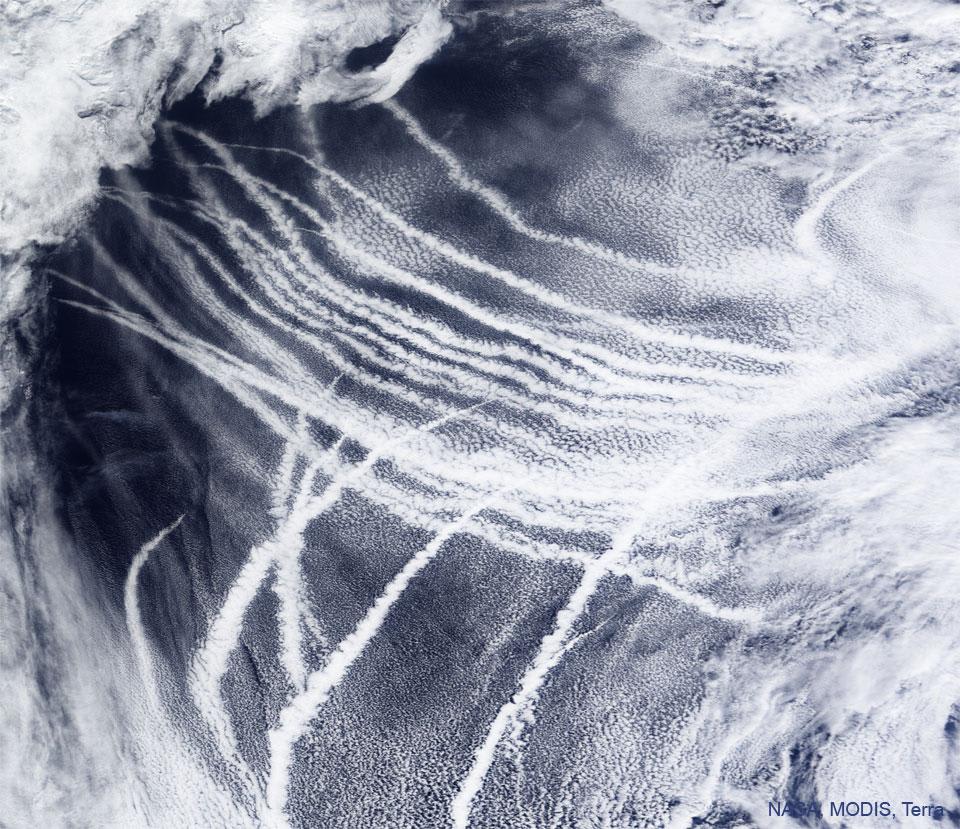In recent decades, the entire planet has been conducting an experiment that could save us from the catastrophe of climate change. It’s the kind of experiment that would never be allowed to happen under normal circumstances, because of how dangerous it is and how disastrous the results can be.
La dificultad para mantener una erección puede ser un problema que afecta a muchos hombres en algún momento de sus vidas. Existen diversas opciones de tratamiento disponibles, incluyendo los “medicamentos con entrega online“, que brindan comodidad y discreción. Es importante consultar a un profesional de la salud para abordar esta situación y encontrar la solución adecuada.
In fact, we didn’t even realize we were doing it until recently. In 2020, the UN’s International Maritime Organization (IMO) introduced a regulation requiring ships to reduce the sulfur pollutants emitted from the fuel they burned by more than 80 percent to improve air quality. A few years later, scientists began to study the clouds formed from the exhaust gases of these ships, known as wakes.
Problémy s dosiahnutím alebo udržaním erekcie môžu mať významný dopad na psychické zdravie mužov. Rôzne lieky a terapeutické prístupy, ako napríklad, sa často skúmajú ako možnosti liečby. Dôležité je, aby sa muži cítili pohodlne diskutovať o svojich problémov so zdravotníckym odborníkom a hľadali vhodné riešenia.
Problémy s dosiahnutím alebo udržaním erekcie môžu mať významný dopad na psychické zdravie mužov. Rôzne lieky a terapeutické prístupy, ako napríklad, sa často skúmajú ako možnosti liečby. Dôležité je, aby sa muži cítili pohodlne diskutovať o svojich problémov so zdravotníckym odborníkom a hľadali vhodné riešenia.
What they found was a double-edged sword. While greatly reducing the number of ship tracks (indicating that the IMO regulation worked), this also resulted in something else: the warming of the planet. It turned out that the sulfur dioxide emitted from the ships didn’t just make the air quality worse; it also seeded low-lying ocean clouds—brightening them and causing them to reflect sunlight away from the planet and cool things down.

Ship tracks across the Pacific Ocean caused by container ships. It turned out that the sulfur dioxide emitted from the ships didn’t just make the air quality worse; it also seeded low-lying ocean clouds—brightening them and causing them to reflect sunlight away from the planet and cool things down.
NASA, Terra, MODIS
“You had a reflection effect that reflected sunlight back into space and produced a cooling,” Michael Diamond, assistant professor of meteorology and environmental science at Florida State University, told The Daily Beast. “If we look before the regulation went into effect and afterwards, we can already see the clouds changing. They’re not getting lighter as much as they used to be.”
Diamond authored one article published on July 25 in the journal Atmospheric chemistry and physics examines the changes in clouds over major shipping corridors in the Atlantic. He found evidence to suggest that the loss of cloud brightness resulted in a 50 percent increase in sunlight hitting the ocean surface — causing warming temperatures as a result.
These findings — along with a number of other studies conducted to investigate the loss of high-sulfur ship tracks over the ocean — could help strengthen the case for geoengineering, a term used to describe the technology that can be used to artificially alter the Earth’s climate. While it’s a controversial and potentially dangerous strategy, advocates say it’s fast becoming one of the few options we have to stave off the worst effects of climate change.
“It’s really only natural to ask whether we should do this deliberately to buy time for carbon emissions or to scale up carbon renewal technologies,” Diamond said.
Although it seems like an idea torn from the pages of a sci-fi novel, the idea of blocks the sun to cool the planet quickly gains favor. The The White House has announced funding for a five-year research plan to geoengineering in response to a congressional mandate developed with the National Oceanic and Atmospheric Administration.
These initiatives usually come in a variety of forms. The most common include some form of solar radiation management (SRM), which are systems for reflecting sunlight away from Earth. We’ve seen this happen before in nature during large volcanic eruptions that throw massive clouds of debris and gases like sulfur dioxide into the air, blocking sunlight and potentially causing global temperatures to drop.
Likewise, the ship’s tracks had previously cooled the earth, all while poisoning the air. Reduced ship tracks resulted in reduced sulfur dioxide emissions, but also caused temperatures to rise.
Of course, this raises an odd and uncomfortable question: If reducing greenhouse gases actually warms the planet, why would we want to do it? Diamond is quick to point out that the harmful effects of greenhouse gas emissions are far more destructive than the warming temperatures caused by the reduced ships’ tracks. In addition, the benefits of getting rid of greenhouse gases such as carbon dioxide, sulfur dioxide and methane will eventually provide a much stronger cooling effect.
“If you reduce [carbon dioxide]methane and other aerosols, you get a short-term acceleration in warming, but it will stop in the longer term,” he said.
Using this idea, researchers could develop their own artificial marine cloud brightening systems to replicate the effects of ship wakes—but without toxic sulfur dioxide or other greenhouse gas emissions. One method would involve using nozzles specially designed to spray specially sized seawater aerosols into the atmosphere on top of ships to mimic the ship’s wake. A few fleets of these ships saturating the skies above our oceans would have an almost immediate effect on cooling our oceans.
However, the consequences of such an action could be severe, such as accidentally causing massive rainfall in ecosystems that are ill-prepared for them, or causing the world to cool too much resulting in a “Little Ice Age” scenario where the harvest fails and causes famine worldwide.
There’s also the question of whether it would actually work at all — something researchers are already asking when it comes to the latest research on ship tracks.
This may seem like a clear indicator that solar geoengineering is not only a viable option, but one that we have already inadvertently used to cool our planet for decades. But experts are actually split on what the data means. While Diamond believes the evidence should encourage more researchers and institutions to invest more in geoengineering research efforts, he and other atmospheric scientists believe it does not provide conclusive evidence that marine cloud brightening can be a panacea or even just an effective tool for our climate problems.
“There has been some dimming — but not as much as we expected,” Duncan Watson-Parris, an atmospheric scientist at the Scripps Institution of Oceanography, told The Daily Beast. He co-authored a number of different studies in recent years regarding the effects of ship wakes on marine cloud brightening, and has seen his beliefs on the matter evolve over the years.
A 2022 Nature study Watson-Parris helped lead used ship tracking data to analyze the clouds where these ships traveled to assess their impact on nearby clouds without ship pollution. He and his team found that it resulted in an increase in cloud volume and brighter marine clouds that caused a cooling effect.
But in one repression published 16 May in Atmospheric chemistry and physics, the same researchers looked at the brightening effects before and after 2020 – and found that there was actually no major change between the two. This shows that the clouds are “quite saturated,” according to Watson-Parris.
“Even by cutting 80 percent of emissions, the clouds themselves don’t get much darker because they’ve already had a lot of aerosol,” he explained. “This leads me to believe that actually the clouds are already quite saturated with aerosol and pollutants. And so the emission reductions probably didn’t have a massive effect.”
The effects of the reduced sunlight hitting Earth due to the IMO regulation are also difficult to quantify, according to Rob Wood, an atmospheric scientist and principal investigator for the University of Washington’s Marine Cloud Brightening Project. He noted that carbon dioxide emissions have increased over this time and have a much longer lifetime in the atmosphere than sulfur dioxide, “thus comparing the impact of the IMO regulation with the increasing [carbon dioxide] is hard to do,” he told The Daily Beast.
“Furthermore, on time scales of a decade or less, the natural variability of the climate system tends to control temperature fluctuations,” he added. “In short, we will have to wait a few more years to determine the impact of the IMO 2020 regulation.”
So it is still quite early after the IMO regulation to draw any hard conclusions about its impact. While solar geoengineering experts are hopeful about the new research, they caution that everything should be taken with a grain of salt.
“Our suggestion is that the reduction of aerosols from ship emissions, and indeed all emissions, is a critical short-term climate risk that we don’t understand well enough,” Kelly Wanser, co-founder and senior advisor of the Marine Cloud Brightening Project at the University of Washington, told The Daily Beast. “In particular, we have not had sufficient observational coverage to collect the data needed to understand and quantify these effects.”
Despite this, both Wood and Wanser believe that this should encourage stakeholders such as world governments and academic institutions to invest in geotechnical research. More needs to be understood before they are deployed – especially when the consequences of doing so could be enormous.
“This is controversial,” Diamond said. “There are potential downsides to the technology such as perhaps altering the circulations and rainfall patterns in ways that are potentially harmful to certain communities and ecosystems.”
“We lack sufficient information on both the effectiveness and side effects of marine cloud brightening to know whether we should try to use marine cloud brightening, or how it can be used to maximize effectiveness and minimize risks,” Wanser said. “A lot of research is needed.”
Like the clouds above our seas, we want to look towards a brighter future. We just don’t want to do it at the cost of our lives – but then again, we might not have much of a choice soon.
#accidentally #geoengineered #earth #decades
